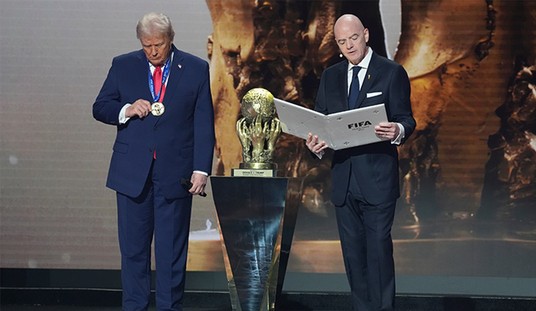We’ve heard a lot of late about the mufti of Jerusalem in the 1930s and 1940s, Amin al Husseini, and his efforts to forge an operational relationship between Nazi Germany and his own Muslim Brotherhood. Israeli Prime Minister Benjamin Netanyahu catalyzed the discussion, which has produced some useful and thoughtful contributions, but in the process an important part of the story has gone lost. It’s the part of the story that deals with Husseini’s ties to Soviet Communism. Lenin and Stalin have somehow failed to claim their rightful places at the top of the pedestal of evil; Hitler’s got it all to himself. But in the case of Husseini, and indeed of jihadism more generally, any serious discussion must make room for the Communists. Listen to Laurent Murawiec in his masterpiece The Mind of Jihad:
…starting in the 1920s and 1930s the Communist Party of Palestine was the great instructor of the pan-Islamist nationalist movement led by the grand mufti Amin al Husseini in the fine arts of communist agitprop, the conveyor of crucial Marxist-Leninist concepts, such as “imperialism” and “colonialism.” It pioneered the application of European political categories to the Middle Eastern scene in general, and the Jewish-Arab conflict in particular. Most of the ugly repertoire of modern Arab and Muslim anti-Semitism came from the Soviet Union (with only the racial-biological component added by the Nazis). The CPP taught the Arab extremists the use of Bolshevik rhetorical devices previously unknown. The “anti—imperialism” so imported by the Communists was remarkably ingested by the Muslim extremists, to the point of becoming integral to their conceptions and expression. It merged with traditional jihadi views that animated the Arabs of the region. In the amalgamation of Bolshevism with jihad that turned out to be so crucial to modern jihad, this was crucial to training the Arabs in Soviet-style politics.
As Murawiec’s last sentence suggests, the Brotherhood’s Palestinian leader learned a great deal about politics from the Kremlin, and he worked very closely with the Communists throughout his career. It wasn’t just the Nazis who inspired him; he was a true student of twentieth-century totalitarianism, and he created a toxic poison of Nazi fascism—and its concrete application—and Soviet Communism. Both elements were later central to the Ayatollah Khomeini, who similarly combined German-style anti-Semitism with Soviet methods of organizing revolution. As Husseini worked with the Palestinian Communist Party to acquire and maintain power, so Khomeini worked with the Iranian Communist Party—Tudeh—to overthrow the shah and create the Islamist tyranny we see today.
There are many important lessons here.
First of all, in the pre-war years, would-be revolutionaries throughout the world often borrowed methods and doctrines from both Nazis and Communists. Don’t forget that Hitler and Stalin cooperated diplomatically and militarily to dismember Poland, and the Nazi-Communist alliance only ended with the German invasion of Russia itself.
Second, German and Soviet tyrannies had a lot in common, and radical Muslims freely picked and chose elements from each in the creation of a jihadist ideology and the structure of Islamist states, whether the Islamic Republic of Iran or the current Islamic State.
Third, as in the case of Husseini, it is a mistake to look at Muslim tyrants as Middle Eastern versions of a specific Western dictatorship. They are attracted to, and inspired by, earlier totalitarian regimes. Keep your eyes on that word “totalitarian.” That is the key concept.
It is certainly understandable that the prime minister of the world’s only Jewish state would focus his attention on the Palestinian mufti’s collaboration with Hitler. Moreover, the facts of that collaboration are hardly in question. But the linkage with Stalin is at least equally significant.









Join the conversation as a VIP Member